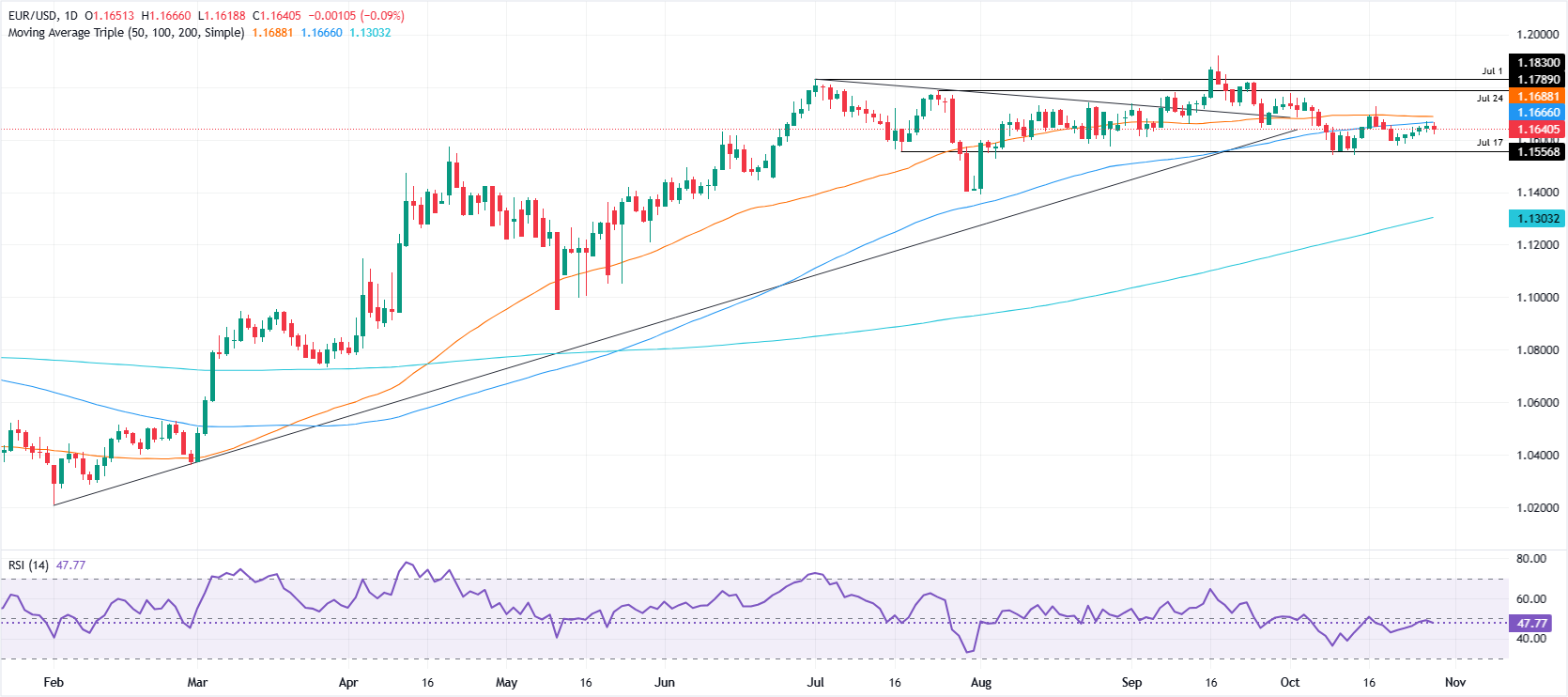EUR/USD slides as Fed delivers rate cut, signals end of QT
- EUR/USD fluctuates after Fed cuts rates to 3.75%–4%, revealing internal division within the Committee.
- Miran dissented, favoring 50-bps cut, while Schmid voted to hold, underscoring split views at the Fed.
- Traders await Powell’s press conference; dovish tone could lift pair, hawkish remarks may trigger downside.
EUR/USD seesawed within the 1.1650-1.1635 range on Wednesday as the Federal Reserve cut rates by 25 basis points as expected, yet there were two dissenters at the meeting. At the time of writing, the pair trades volatile, as traders await the Fed Chair Jerome Powell press conference.
Dollar swings as traders await Powell’s tone for clues on future easing path
The majority of the Federal Open Market Committee voted to reduce the fed funds rate to 3.75%-4%. The two dissenters were Fed Governor Stephen Miran on a dovish note, as he voted for a 50 bps rate cut, while the Kansas City Fed President Jeffrey Schmid opted to keep rates unchanged.
In its statement, the Federal Reserve said “that economic activity has been expanding at a moderate pace. Job gains have slowed this year, and the unemployment rate has edged up but remained low through August; more recent indicators are consistent with these developments. Inflation has moved up since earlier in the year and remains somewhat elevated.”
They added, “The Committee decided to conclude the reduction of its aggregate securities holdings on December 1,” signaling an end to its balance sheet runoff as part of its ongoing policy recalibration.
EUR/USD reaction to the Fed’s decision

The EUR/USD remains at around familiar levels, near 1.1650 with traders eyeing Powell. On the upside, the first key resistance would be the day’s high at 1.1665, followed by 1.1700. Conversely, on the downside, the first support would be the day’s low of 1.1618, followed by 1.1600.
Fed FAQs
Monetary policy in the US is shaped by the Federal Reserve (Fed). The Fed has two mandates: to achieve price stability and foster full employment. Its primary tool to achieve these goals is by adjusting interest rates. When prices are rising too quickly and inflation is above the Fed’s 2% target, it raises interest rates, increasing borrowing costs throughout the economy. This results in a stronger US Dollar (USD) as it makes the US a more attractive place for international investors to park their money. When inflation falls below 2% or the Unemployment Rate is too high, the Fed may lower interest rates to encourage borrowing, which weighs on the Greenback.
The Federal Reserve (Fed) holds eight policy meetings a year, where the Federal Open Market Committee (FOMC) assesses economic conditions and makes monetary policy decisions. The FOMC is attended by twelve Fed officials – the seven members of the Board of Governors, the president of the Federal Reserve Bank of New York, and four of the remaining eleven regional Reserve Bank presidents, who serve one-year terms on a rotating basis.
In extreme situations, the Federal Reserve may resort to a policy named Quantitative Easing (QE). QE is the process by which the Fed substantially increases the flow of credit in a stuck financial system. It is a non-standard policy measure used during crises or when inflation is extremely low. It was the Fed’s weapon of choice during the Great Financial Crisis in 2008. It involves the Fed printing more Dollars and using them to buy high grade bonds from financial institutions. QE usually weakens the US Dollar.
Quantitative tightening (QT) is the reverse process of QE, whereby the Federal Reserve stops buying bonds from financial institutions and does not reinvest the principal from the bonds it holds maturing, to purchase new bonds. It is usually positive for the value of the US Dollar.

